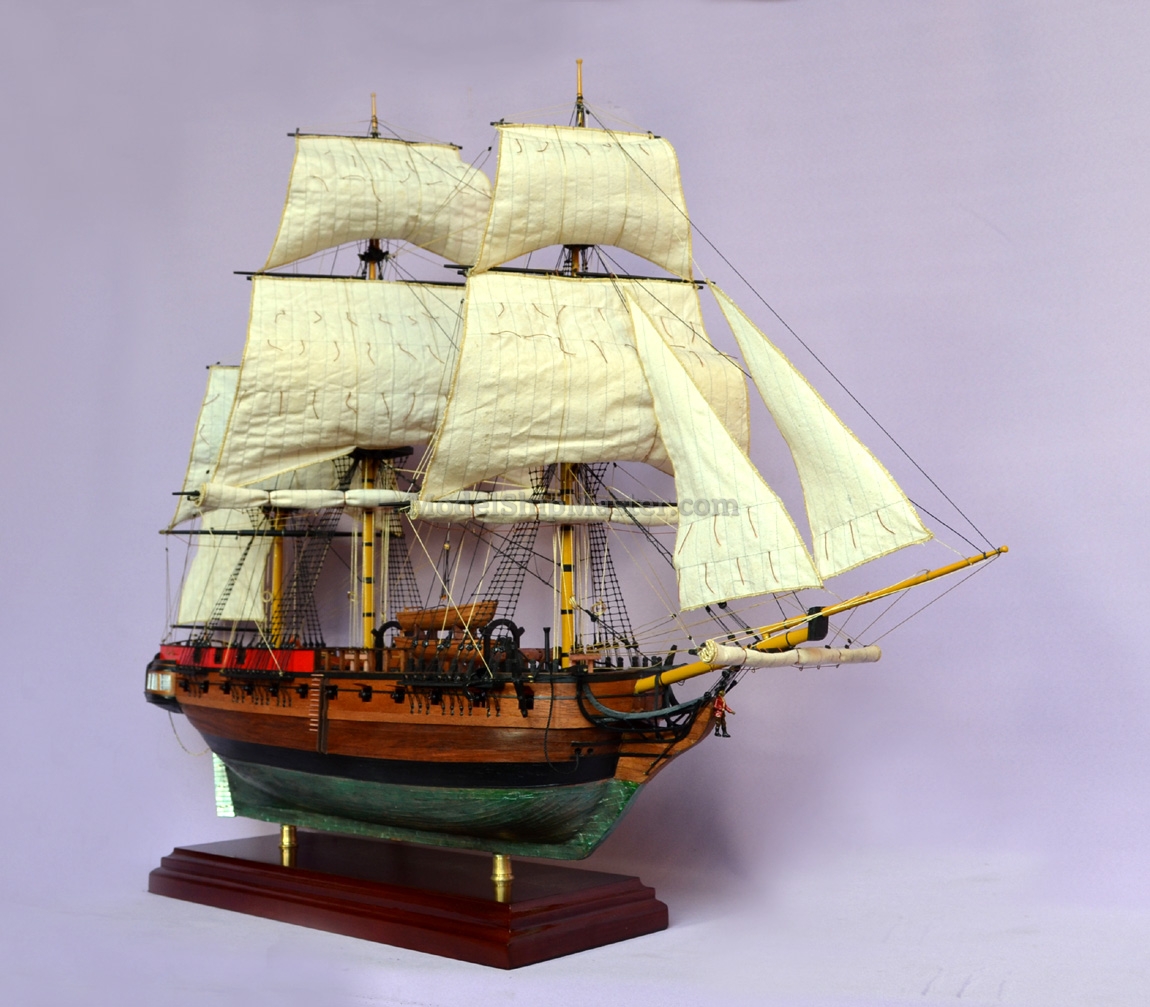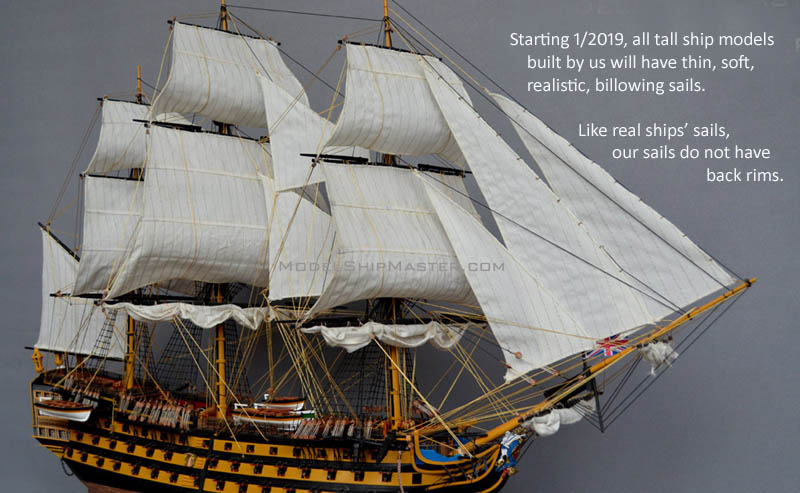|


256-bit encryption
$500,000 protection

|
HMS SIRIUS 1786

About
HMS Sirius
model ship:
- Built from scratch over
hundreds of hours by master artisans
- High quality woods include cherry, birch, maple and
rosewood
- Double
plank-on-frame
construction (very
important)
-
Copper-plated bottom:
individual copper pieces that were weathered unevenly to
create a realistic look (no shiny copper paint, no fake lines.)
-
Blackened metal cannons and wooden carriage.
Under the main deck, all guns are "real" guns which
have proper barrels and wooden carriages which sit on 2
real decks under the main deck. These
guns are not simple barrels inserted into a solid hull
like in a cheap model.
- Full length masts and bowsprit per construction plans
- Authentic Extensive rigging system comprised of many
different sizes of rope and features numerous blocks and
deadeyes
History
of the HMS Sirius 1786:
The Sirius was a Royal Navy
ship that led the
First fleet on their historic journey to establish a
colony in Australia. The First Fleet was made up of
eleven vessels, two navy ships HMS Sirius and HMS Supply
and nine privately owned, contracted transports.
The Sirius carried a crew of about 160 men. She
was commanded by Arthur Phillip with John Hunter as
second captain. Phillip would be in charge of the ship
as part of the First Fleet, and then Hunter would be in
charge after while Phillip was setting up the penal
colony.
The First fleet contained 1,500
marines, officers, seamen and their families and 732
convicts.
HMS Sirius carried all the guns
and ammunition for the Fleet. She left England on May
13, 1787, and sailed to Australia with stops at Santa
Cruz, Rio de Janeiro and Cape Town. She reached Port
Jackson eight month and a week later, on January 26.
Captain Arthur Phillip
established the first colony in Australia at Sydney Cove
inside Port Jackson in 1788. That colony grew to become
Sydney. Captain Phillip landed to proclaim the first
Australia Day and became the first Governor of the new
nation. Sirius remained with
the settlement while most other ships of the fleet
returned to England.
In October 1788, when the colony was short of supplies,
HMS Sirius sailed east to Cape Town to get food. Leaving
Cape Town in January 1789, she continued to travel east
until she got back to Sydney in May. This eastward
journey using the west winds, known as "the Roaring
Forties" meant that the ship had sailed completely
around the world. Rough seas near Tasmania smashed her
figurehead and badly damaged the front of the ship.
In March 1790 the Sirius went to Norfolk Island to
deliver more soldiers, convicts and supplies. She was
able to unload the people, but bad weather made getting
the supplies ashore impossible. Four days later Captain
Hunter tried to land the supplies in Sydney Bay. The
ship drifted too far into the bay and was wrecked on a
reef on March 19. All the crew were rescued. Over the
next two week most of the supplies were saved as well.
The loss Sirius was a major disaster for the settlements
at Port Jackson and Norfolk. In command at the time was
Captain John Hunter, later the second governor of New
South Wales.

Email us
for price and dimensions.
Model is built per commission only. We require only a
small deposit to start the process.
Click on this link for
lead time.

"The HMS Sirius arrived yesterday and
I would like to thank you and your team for a beautiful
piece of work. The quality is truly impressive.
Regards, Mark."
|